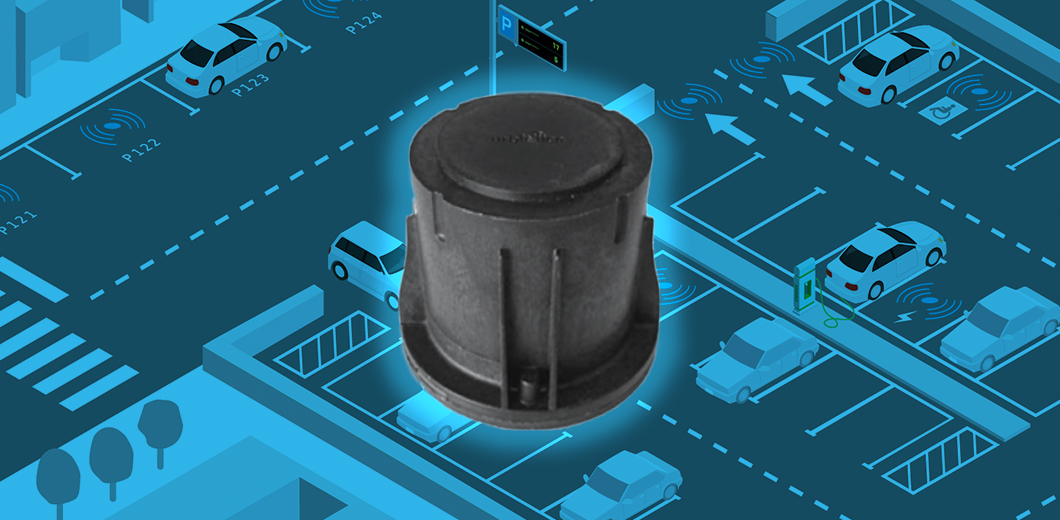The technology we use to improve mobility in cities has changed a lot in recent years. Now, we have IoT (Internet of Things) sensors to help us with parking space management. These sensors use magnetic detection to measure changes in the magnetic fields surrounding the spaces to confirm whether they have been occupied by a vehicle.
By collecting this data in real time, these devices enable drivers to find free spaces quickly, as well as helping mobility managers to control parking in cities more efficiently. This reduces the time that vehicles spend circling the streets in search of parking spaces, improves urban mobility and reduces pollutant gas emissions.
However, these magnetic fields can be affected by the environment, which can lead to the information provided by the sensors not being entirely accurate if no measurements are taken. Magnetic disturbances pose a challenge that has mythologized the use of devices with multiple sensing systems to achieve reliable results, although recent demonstrations do not point in this direction.
Types of magnetic disturbances
Magnetic disturbances affecting detection sensors can be classified into two categories: constant and variable. Large cities or areas where public transportation is abundant would be the most prone to suffer from these interferences, and may affect the accuracy of the sensors in different ways.
Constant disturbances
Constant disturbances come from sources that are always present in the environment, for example, electrical installations that feed buildings and public transport systems in cities. These high-voltage cables, transformers and other electrical equipment generate magnetic fields that can interfere with sensor readings, causing systematic errors in data collection.
Variable disturbances
On the other hand, variable disturbances are more difficult to predict as they are caused by temporary changes in the magnetic field, for example, when trains, subways or streetcars pass by, depending on their power supply system. Dissuasive parking lots, also known as Park & Ride, are often well connected to the city’s public transport network, so they are also areas prone to interference.
How to mitigate magnetic disturbances
In the market, there are different approaches to address this common situation and improve the reliability of IoT sensors. Two of the most popular strategies are multiple sensing and single sensing with advanced filters.
Multiple detection sensors
These sensing devices integrate multiple technologies, such as magnetic, infrared or radar sensing, into their system. The underlying idea is that by combining them, the weaknesses of one technology can be compensated for by the strengths of another, making the sensor results more reliable. However, despite the advantages it appears to offer, it has been shown that multi-detection is often not as cost-effective in the long run. By combining multiple technologies, sensors can result in conflicting readings, which can confuse data interpretation.
In addition, this is especially sensitive when calibrating sensors, since an error in one of the detections may interfere with the calibration of the other, resulting in a suboptimal calibration that would affect the reliability of the detection.
Single detection sensors with advanced filters
Another approach, better received, is the optimization of a single detection system through advanced filters. These filters are designed to minimize the impact of magnetic noise and the disturbances it generates. Unlike the previous approach, this method reduces the risk of erroneous readings and simplifies sensor maintenance.

U-Spot: Single-spot IoT detection
Pre-detection calibration
Once the sensors are installed, it is important to carry out a continuous calibration process to adapt them to the place where they will operate. This process is carried out by artificial intelligence algorithms that are capable of filtering the magnetic interferences present for optimal calibration over the time of use. By constantly adjusting the sensor to environmental conditions, its accuracy is improved, allowing it to ignore disturbances that may affect its performance.
Sensor filtering
Once the sensor is already in operation, additional filters can be applied to eliminate magnetic interferences, leaving only the correct values for the application of the detection algorithms. These filters are also configurable according to the needs of each project and sensor.
Filtering on the platform
In addition to filtering at the sensor, filtering can be performed at the platform or server taking into account information from multiple sensors. This facilitates anomaly detection using artificial intelligence-based algorithms.
This capability is one of the advantages of cloud processing over local processing. By using centralized platforms, more advanced algorithms can be used, rapid updates can be made, and data from different sources can be combined. All this helps to improve the accuracy of the system. </p>
Success story: pattern detection in Vienna
In Austria, we had the opportunity to carry out a parking and mobility improvement project at the Shopping City Süd shopping mall in Vienna. Our goal was to reduce congestion in the 3,000 outdoor parking spaces and improve the customer experience. To do this, we used IoT sensors installed at ground level that transmit availability information.
Once the devices are installed, before use, we analyze the environment to configure them according to the needs of the space. We always take into account magnetic disturbances that may affect the accuracy of the sensors and, in this case, we detect the passing of a nearby train at specific times based on artificial intelligence algorithms. Once these patterns are detected, we apply advanced filters to adjust the sensitivity of the IoT sensors and accurately detect the occupancy of parking spaces.
Although there are a multitude of approaches to solving magnetic disturbances, the alternative that has proven to be most effective in recent years is to employ smart filters on single detection sensors. This method facilitates the calibration of the devices and avoids erroneous readings that can hinder the reliability of the system and, consequently, the drivers’ experience.
At Urbiotica, we constantly innovate to improve the IoT technology of our sensors, developing advanced filters that allow adjusting the accuracy of the devices to different environments and needs. We offer solutions for all types of urban infrastructures, with reliable and real-time data.

